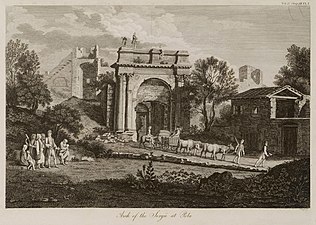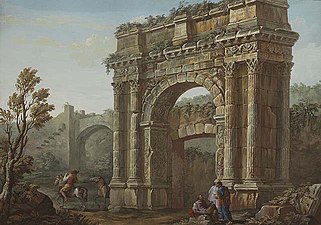 The arch today | |
 | |
| 44°52′06″N13°50′49″E / 44.8683°N 13.8469°E | |
| Location | Pula, Croatia |
|---|---|
| Type | Triumphal arch |
| Beginning date | c. 29 BC |
| Completion date | c. 27 BC |
| Dedicated to | The Sergii family |
Arch of the Sergii (Croatian: Slavoluk Sergijevaca; Italian: Arco dei Sergi) is an Ancient Roman triumphal arch located in Pula, Croatia. The arch commemorates three members of the Sergii family, specifically Lucius Sergius Lepidus, a tribune serving in the twenty-ninth legion that participated in the Battle of Actium and disbanded in 27 BC. This suggests an approximate date of construction: 29–27 BC. The arch stood behind the original naval gate of the early Roman colony. The Sergii were a powerful family of officials in the colony and retained their power for centuries. [1]

